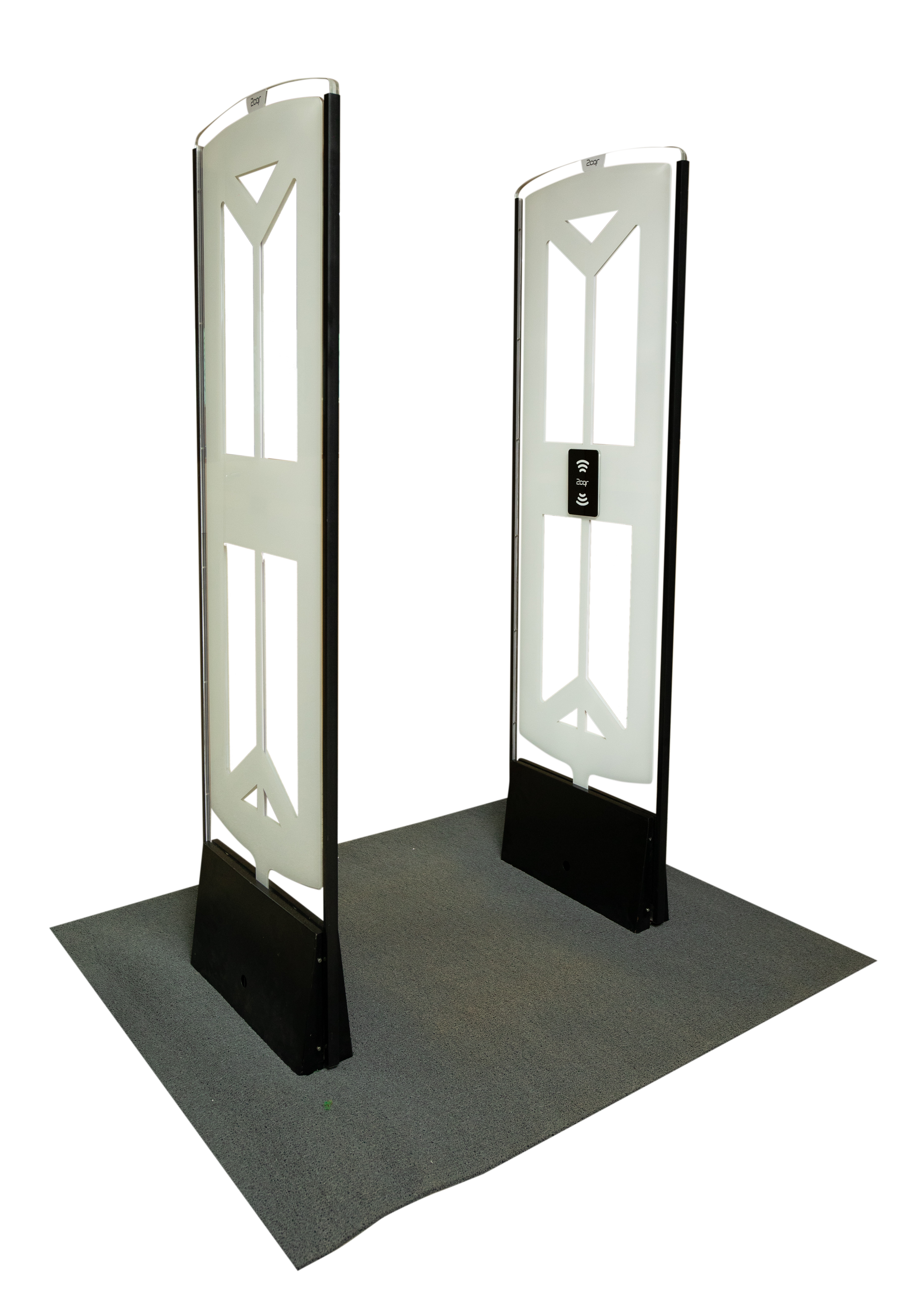RFID (Radio Frequency Identification) technology has improved security and inventory management across various sectors. One of the most common applications of this technology is the RFID security gate. These gates are designed to increase the security of tagged items in places like libraries, retail stores, and jewellery shops,etc. This blog aims to provide a detailed understanding of RFID security gates, their features, functioning, and diverse applications.
Introduction to RFID Security Gates
RFID security gates are sophisticated devices used to detect and prevent the unauthorized removal of items tagged with RFID labels. These gates are typically installed at the exits of various facilities such as libraries, retail stores, warehouses,etc. Equipped with advanced sensors and readers, RFID security gates continuously scan for RFID tags. When an item with an active RFID tag passes through the gate without proper authorization or deactivation, the system triggers an alarm. This alert not only notifies the staff about the unauthorized movement ,but it can also can be integrated with other security systems like CCTV , etc to capture images or video of the event, thereby preventing potential theft or loss and ensuring the security of valuable assets.
Design and Structure of RFID Security Gates
RFID security gates come in various designs, but they generally consist of tall, sleek panels that can be installed at doorways or exit points. These panels are equipped with antennas and RFID readers. The gates are often made of durable materials like metal and hard plastic, ensuring they can withstand heavy use. Despite their robust construction, these gates do not occupy much space, making them suitable for a variety of environments. Some designs are transparent, making them less intrusive and aesthetically pleasing, while others may be opaque with a more industrial look.

RFID Security Gate
How RFID Security Gates Work ?
The working mechanism of RFID security gates is based on radio frequency technology. It consists of the following steps
- Tagging Items : Each item in the facility is tagged with a small RFID label, which contains a microchip and an antenna. The microchip stores information about the item, such as its identification number, description, and other relevant data.
- RFID Readers and Antennas : The RFID security gates are equipped with readers and antennas within, that emit radio waves. These waves power the RFID tags as they come within range.
- Detection and Identification : When a tagged item passes through the RFID gate, the antenna receives the signal from the tag. The reader then processes this signal and retrieves the data stored in the tag.
- Authorization Check : The system checks whether the tag data corresponds to an authorized transaction/billed item. If the item has been properly checked out or deactivated, it will not trigger any response.
- Alarm Trigger : If the system detects that the item is being removed without proper authorization, issuance, or billing, it triggers an alarm. This can be an audible sound, a visual alert, or both, notifying security personnel to intervene.
Applications of RFID Security Gates
-
Libraries
Libraries were among the first to adopt RFID security gates for their numerous benefits. In libraries, each book is tagged with an RFID label. When a patron borrows a book, the tag is deactivated or authorized by the library's system upon issuance. If someone tries to remove a book without checking it out properly, the RFID gate at the exit will detect it and trigger an alarm. This system not only prevents theft but also streamlines the check-out and check-in process, making it very useful for both staff and patrons.
RFID security gate for library -
Retail Stores
Retail stores, especially those selling high-value items, use RFID security gates to prevent theft. Each product in the shop is tagged with an RFID label. When a customer purchases an item, the tag is deactivated at the bill counter. If someone attempts to leave the store with an unpaid item, the RFID gate will detect the active tag and sound an alarm. This technology helps reduce theft, and the overall RFID system can also improve inventory management in shops by providing real-time data on stock levels.
RFID Security gate for Retail Shops -
Jewellery Shops
In jewellery shops, RFID security gates are essential for protecting valuable items. Each piece of jewellery is tagged with a discreet RFID label. When someone tries to remove a jewellery without billing /authorization, the gates at the store exits trigger an alert. This high level of security is very crucial for protecting expensive items and preventing losses.
RFID Security gate for Jewellery shops
Warehouses and Logistics
RFID security gates are also used in warehouses and logistics centers to monitor the movement of goods. In these settings, companies tag pallets and individual items with RFID labels. This tagging allows for real-time tracking of inventory as items move through the facility. The RFID security gates are installed at key exit points, and they scan for tags as items pass through. If an item is not authorized to leave the facility, the gate triggers an alert. This system ensures that only authorized items can exit, which helps reduce the risk of theft and loss during transportation, providing an added layer of security .
Advantages of RFID Security Gates
RFID security gates offer numerous benefits that make them a valuable addition to various facilities. Here are some key advantages:
- Improved Security : RFID security gates significantly reduce theft and unauthorized removal of items. The gates trigger alarms when items without proper authorization attempt to pass through, ensuring high levels of security.
- Cost Savings: With improved inventory management and reduced theft, businesses can save money on lost or stolen goods.
- Automated Monitoring : RFID systems provide continuous monitoring without the need for constant human oversight. This allows staff to focus on other important tasks while the RFID system handles security and inventory tracking.
- Durability and Reliability : RFID gates are typically built with durable materials and designed to withstand heavy use. This ensures long-term reliability and minimal maintenance.
- Integration with Other Systems : RFID security gates can be integrated with other security and inventory management systems, providing a comprehensive solution for asset protection.
Conclusion :
RFID security gates are an essential technology in modern asset protection and inventory management. Their ability to detect unauthorized movements of tagged items makes them invaluable in various settings, from libraries and retail stores to warehouses and jewellery shops. By understanding their structure, working mechanism, and applications, businesses can better appreciate the benefits of investing in RFID security gates to improve security.
2CQR provides RFID security gates for libraries, jewellery stores, and retail stores with customizable options. Kindly contact us to learn more.

